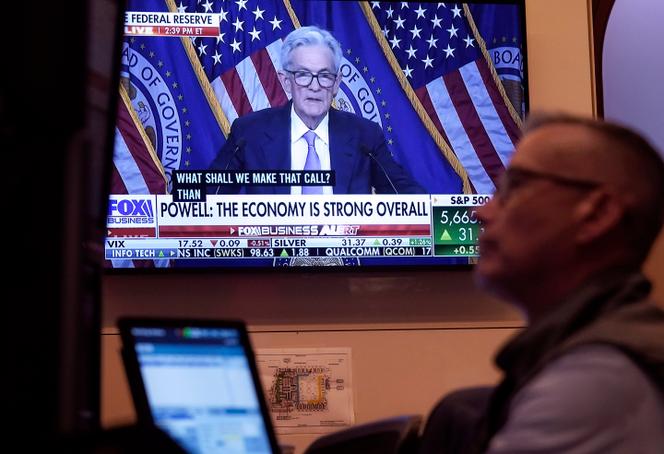


"We don't think we're behind. But I think you can take this as a sign of our commitment not to get behind." This is how Jerome Powell, president of the Federal Reserve, justified his decision to sharply cut the US central bank's key interest rates, at the conclusion of the meeting of its Federal Open Market Committee on Wednesday, September 18. This sharp cut is the first since the Covid-19 pandemic in early 2020. Until now, US short-term interest rates had been set in a range of between 5.25% and 5.5%, their highest level since 2006. They will now be between 4.75% and 5%.
Many operators were expecting a moderate 0.25-point drop for various reasons: Because the Fed wants to be predictable; because it doesn't want to show that it's panicking in the face of a worsening labor market; because it doesn't want to let go of the reins too quickly despite the easing of inflation; because it doesn't want to be accused of favoring the Democratic administration at this meeting, the last before the presidential election.
Ultimately, in the space of around 10 days, it was a different scenario that prevailed, as predicted by reporters from the Wall Street Journal, who are by far the best informed about the Fed. There were several reasons for this decision. The previous meeting in July was followed by a poor unemployment figure, suggesting in retrospect that the institution should have moved as early as this summer, as Harvard economist Jason Furman had stated. Moreover, even with key rates cut by half a point, US monetary policy remains restrictive with the easing of inflation, which fell back to 2.5% year-on-year in August. As a reminder, it had hit a record 9.1% in June 2022. The American institution no doubt ultimately considered that independence meant doing what had to be done, not being paralyzed by electoral deadlines, as the Wall Street Journal claimed.
The fact remains that this half-surprise left the financial markets perplexed: Should they welcome the rate cut, which facilitates economic recovery, or worry about a possible recession? Yo-yoing between red and green, Wall Street ended the day down 0.3 points on the Nasdaq and S&P 500, which had returned to the record levels reached before the turbulence of the summer, caused precisely by the poor unemployment figures. Ten-year yields now stand at 3.7%, well below the 5% threshold crossed briefly in October 2023.
The most eagerly awaited impact should be on property rates, which have increased the cost of purchase for buyers: 30-year mortgage rates had jumped from 2.65% in January 2021 to 7.8% in October 2023, and have only fallen back to 6.2%. A cut would reduce the overall cost of real estate and revive transactions, as homeowners indebted at fixed rates coming out of the Covid-19 pandemic have been refusing to sell to avoid losing the benefit of their favorable-rate debt. Since peaking in September 2022, the dollar has fallen sharply, with the value against the euro dropping from $0.97 to $1.11.
You have 52.61% of this article left to read. The rest is for subscribers only.
